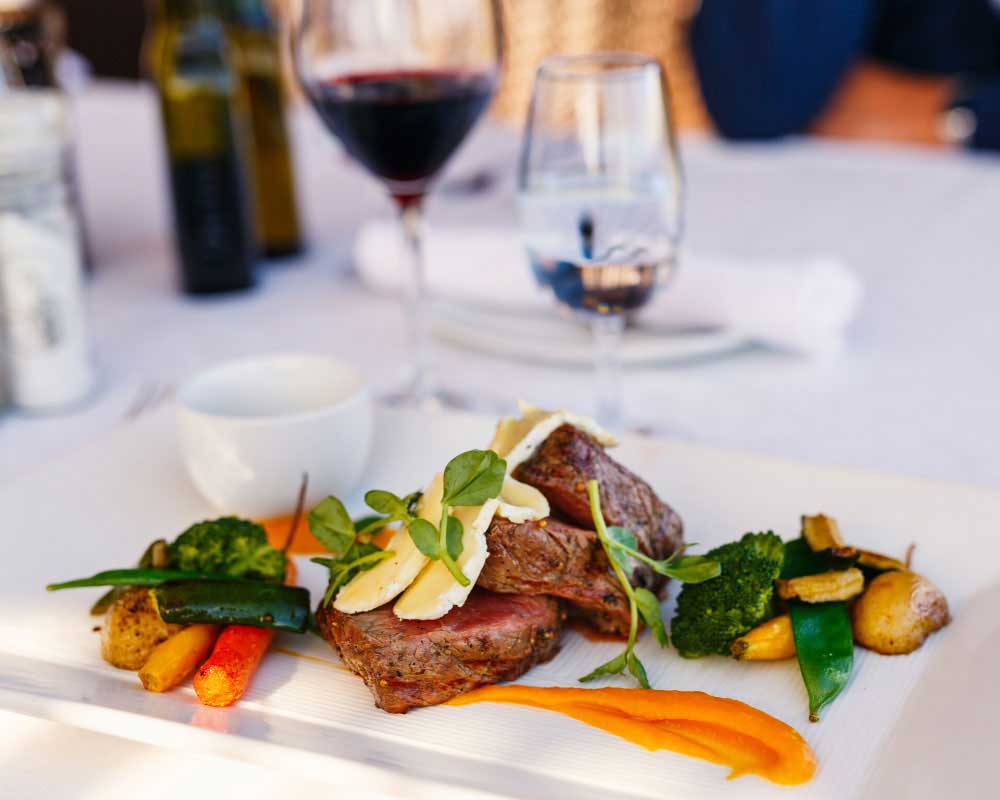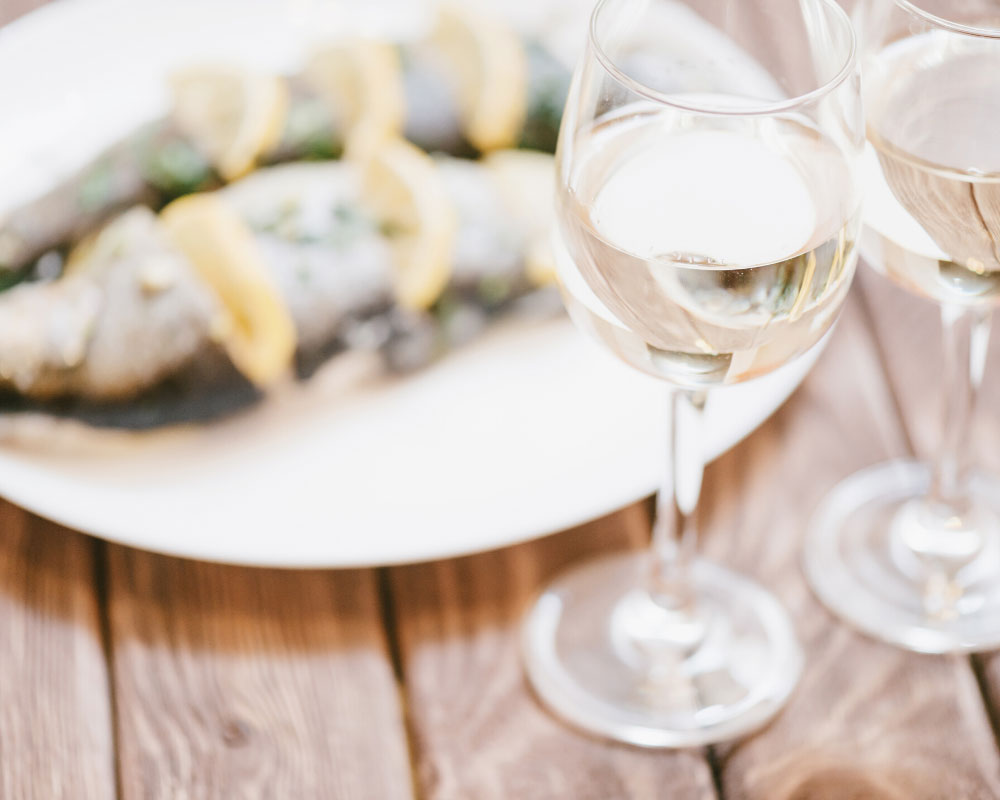Food and wine join forces to offer a fabulous blend of aromas and flavours. Wine enhances a meal and highlights all the sensory power of its ingredients. There are different criteria that need to be respected to truly delight the palate and ensure the success of a carefully prepared meal shared with family or friends. Taste, texture and aromas must be in harmony in order to appreciate the sensual pleasure of a gourmet experience.
Whilst finely sparkling white wines are recommended for aperitif or starters, red and white wines excel during a meal. Since the intensity of tannin neutralises the softer aromas of a white wine, it is recommended to serve wines in “power” order, from the lightest to the most powerful and from the driest to the most sweet. Your meal will therefore be composed in a kind of rising crescendo of taste so that each wine will enhance the dish that it accompanies.
As well as its magnificent landscapes, its chateaux and its gastronomy, the Loire is famous for its wines that are as prestigious as they are diverse. Ranging from sparkling whites to dry or delicate rosés and characterful reds, our region proposes a wide range of wines to harmonise with your style of cuisine. It is undoubtedly the wine region whose diversity of wines offers the greatest number of possibilities for pairing with food.

The method of cooking, but also the type of meat must be taken into consideration to make a successful meat and wine pairing. Full-bodied, tannic wines such as a Chinon or an Anjou-Villages will ideally accompany red meats throughout the meal. For casseroles and stews we recommend wines with soft tannins such as a Champigny or a red Sancerre. And for white meats, it is best to choose an elegant, fruity red wine like a Saumur Champigny or a Saint-Nicolas de Bourgueil. Try an original pairing of an aromatically complex white made from Chenin with white meats in sauce. And here’s a tip, match the colour of the sauce to the colour of the wine. Note that the spicier your white meat dish, the more you should turn to a powerful red wine to accompany it. ,Certain rosés like a demi-sec Cabernet d’Anjou, will pair well with spicy dishes, as their natural sweetness will tame the heat of the spice.


Sparkling or dry white wines match perfectly with fish and shellfish. With smoked salmon, for example, opt for a Touraine Sauvignon or a Pouilly-Fumé that will respect its delicate flavours. As for shellfish like oysters, crayfish or prawns, these go best with crisp whites such as Muscadet Sèvre-et-Maine on lees or a Sancerre from a marl terroir. But you can also serve red wine with fish in sauce for a more original pairing. A Pinot Noir from Sancerre or Ménetou-Salon makes an excellent accompaniment to white fish in a red fruit sauce or a red wine reduction.
After having explored our Domaines and enjoyed tasting the wide range of wines proposed, don’t hesitate to talk to our sommeliers, who will be delighted to answer all your questions. Of course, the best wine pairings depend on your own preferences and approach to the different wines. So, for the most exceptional food and wine combinations, give free rein to your imagination and your epicurean, gourmet instincts!
To accompany the majority of mixed salads a dry white or rosé wine is ideal. If serving a fish or seafood salad, a Sancerre rosé would be the perfect choice. For a tomato and mozzarella salad prefer an aromatic, floral white like a Touraine Sauvignon, for example. Bring out a well-chilled Loire rosé to partner a Greek salad, or a white Sancerre with your Caesar salad.
For cold winter evenings, raclette and tartiflette are the two great French classics. In either case, white wine is the perfect, refreshing foil to the creaminess of the cheese. For raclette, choose a young, fruity wine such as a white Saumur or an IGP de Loire Chardonnay that will balance the richness of the cheese and charcuterie. And although whites are traditional with raclette, don’t dismiss red wines, which can bring suppleness and a touch of fruit to this dish. We would recommend a Bourgueil or a vat-aged Pinot Noir from Sancerre. For tartiflette, white wines also bring a touch a freshness to this cheese-rich dish, or alternatively a light red wine such as a gently extracted Cabernet Franc.

Don’t distract novices from the knowledge and pleasure of wine by using a vocabulary reserved only for the initiated: just talk about your wines.
Colette, writer

Sparkling wines will delicately match with your desserts, thanks to their balance of sweetness and acidity. Equally, a still wine can also be a good choice, for example a Coteau du Layon would be perfect with apple tart or crumble.
For red fruit desserts, opt for a rosé such as a Cabernet or rosé d’Anjou, a Crémant de Loire sparkling rosé or, for a delicious surprise for your guests, a sparkling red. For chocolate or caramel based desserts choose a Chinon or a Saumur Champigny… the combination of chocolate and red wine is just exquisite. And finally, for fruit salads a Coteau de l’Aubance or a demi-sec Crémant de Loire will bring out all the aromas of the fruit.
To select the right wine for serving with chocolate, you need to take into account the percentage of cacao it contains. Because, just like wine, dark chocolate contains tannins. Preferably opt for a red wine, with Chinon Cabernet Franc marrying particularly well with chocolate mousse.For chocolate that has a lower cacao content, like milk chocolate, try a dry white such as Chardonnay… delicious with macaroons. And for white chocolate, a sweet wine is best, as it contains no tannins.